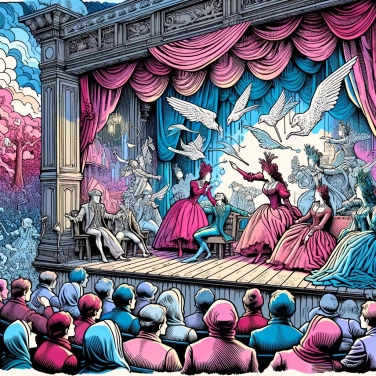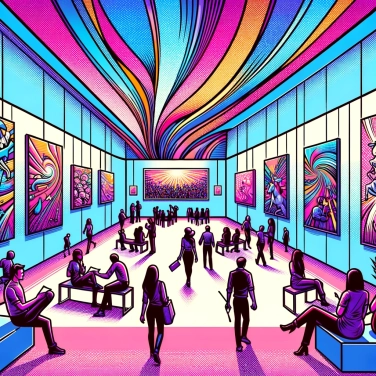Theater costumes are important because they help to situate the action in time, space, and social context. They allow actors to embody their character and offer the audience an immersive visual experience.

When you see a character enter the stage, their costume already tells a story. Through its colors, textures, and style, you immediately feel particular emotions: sadness, joy, fear, sympathy... You can even identify with them, understand their motivations or passions just by observing what they are wearing. A torn dress expresses distress, bright colors evoke carefreeness, a strict suit commands authority or severity. It is through clothing that characters become more real, more relatable, and we truly manage to enter their minds throughout the entire play.
Costumes quickly set the scene and establish the tone of a play. A good costume instantly transports the audience to a specific time, a fantastical universe, or a distant place without the need for lengthy explanations or ultra-complex sets. The materials, colors, and shapes used directly influence our perception: dark velvet for a mysterious atmosphere, light and colorful fabrics for a festive or joyful vibe. The viewer unconsciously picks up on these visual cues and more easily immerses themselves in the story. And the more credible and consistent the costume is with the time period or universe represented, the faster the audience forgets their daily life and fully immerses themselves in the performance. It's like creating a bubble where everything happening outside the stage disappears.
Costumes in theater quickly help to situate characters within the story. A costume can directly indicate the time period, social status, or even the personality of the character. For example, a king will be easily recognizable by his crown and luxurious clothing, while a peasant will have simple and worn-out clothes. Some visual clues given by the costumes, such as color (black for mourning, white for innocence), pave the way for a better understanding of the story without the need for endless explanations. In fact, costumes often function as a parallel language: a few glances and you've already grasped a good part of the plot.
A costume precise in its details (buttons, fabrics, embroidery, etc.) enhances the sense of reality for the viewer. It may seem like nitpicking, yet these small elements significantly contribute to the immersion. Visually credible fabrics or textures convince the audience more: they help to forget oneself, to accept the fiction as true. Conversely, a missed or anachronistic detail (imagine a quartz watch worn by a medieval knight!) can instantly break any engagement. The human eye is particularly adept at spotting these inconsistencies, even unconsciously. A carefully finished costume therefore acts quietly but very effectively on the authenticity of the theatrical experience.
During the Elizabethan era, as in the time of Shakespeare, costumes were often specifically designed to reflect the social class of the characters, allowing the audience to immediately understand their status.
Some modern theaters integrate LED technology directly into costumes, thereby creating stunning special effects and enhancing audience immersion.
Historically, in Japan, Kabuki theater costumes feature elaborate color patterns that inform the audience about the age, personality, or intentions of the character.
To create a realistic impression on stage, some costume designers use specific techniques such as artificial aging of fabrics to simulate the natural wear of clothing.
Not necessarily. Contemporary costumes can provide a modern and original perspective on a classic play, thus attracting a new audience while highlighting the timeless themes of the story. The key is their visual and symbolic coherence with the director's intention.
The creation of costumes generally involves several stages: research and sketches, selection of materials based on the required visual and practical effects, prototype construction, fittings and adjustments with the actors, and finally, finishing touches and details before rehearsals and performances.
Not always. While realistic costumes promote historical or cultural authenticity, abstract or symbolic costumes can also enhance emotional and intellectual immersion by stimulating the viewer's personal interpretation.
The costume subtly reflects the internal psychology of the character: dark colors to symbolize sadness or mystery, deconstructed cuts for psychological instability, and clothing choices that reveal social status, etc. Each element of the costume deepens the audience's understanding.
Costume designers deeply analyze the time period, the setting, the characteristics of the characters, and the director's intentions. They combine historical research and creativity to enhance the credibility of the dramatic universe.

No one has answered this quiz yet, be the first!' :-)
Question 1/5